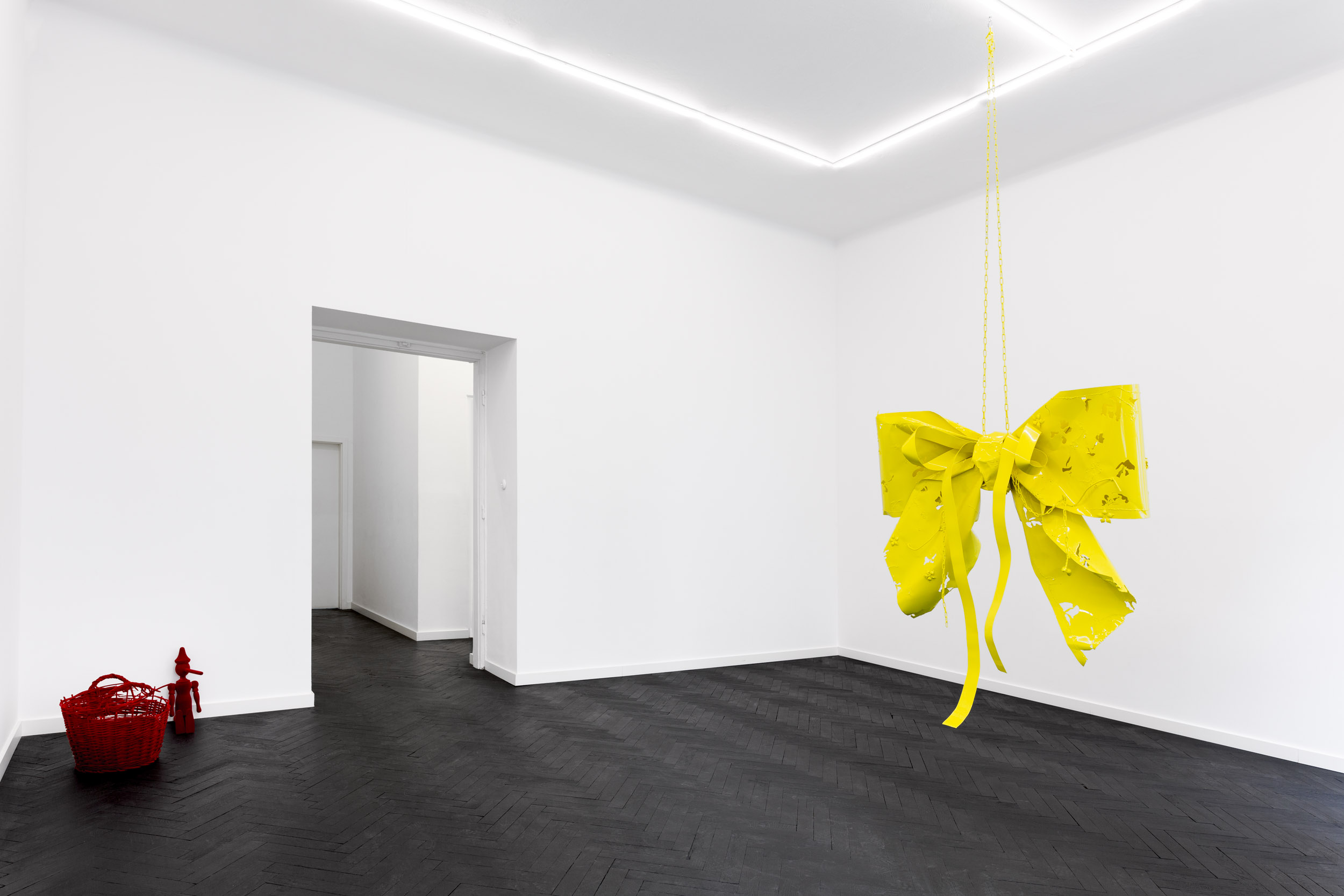
Hannah Sophie Dunkelberg
Pale Pleasures
May 6 – June 17, 2023
Opening: Saturday, May 6
5 – 7 pm
get press pack here
A féminin non-éternel? The materialist surrealism of Hannah Sophie Dunkelberg's art
Ewa Majewska
For, in a discussion, not only is nonviolent agreement possible, but the suspension of violence in principle can be altogether explicitly documented by something significant: impunity for lying.
Walter Benjamin, Toward the Critique of Violence.
Maybe you even would like to write a fairy tale, Ewa – wrote Hannah Sophie Dunkelberg in our small exchange preceding my writing of this text. Not a bad idea, I first thought, as storytelling seems feasible and I have done it, since childhood actually. But here I realized I wasn't going to write a story. Somehow the narrative flew on its own. Let me show you.
Theft, collaboration, co-optation, appropriation, assimilation, rejection, combat, isolation – there are as many strategies of coping with the male-dominated culture, as there are women-identifying persons. In The Laugh of the Medusa (1975), Hélène Cixous opts for a strategy which she attributes to magpies, one based on patchworking and theft, as opposed to abandonment or assimilation. Her aim is to transform culture by enacting its chosen parts and adding new strategies, such as writing with the body. Appropriation, recycling, selection and enriching. Inspired by Cixous, facing the heterogeneity of possible strategies, I always chose the more complex and laughter-involving ones – theft, appropriation, queering and the like. In the artwork of Hannah Sophie Dunkelberg there are many instances of such practice – there is detectable presence of stealing – girls take the boyish means of production and enjoy themselves, as in the ‘Ribbons’ series, there is some version of queering the failure, as in ‘Tired Horses’, where animals take the places of women – on a psychoanalyst's couch, on the chaise-longue, in a boudoir... The ‘Corsets’ – new objects of Dunkelberg's surreal, dreamy art – announce another exercise in appropriation, but this time one playing with the cultural feminine, with women's traditional armor – beauty and its cruel optimism.
When I first saw the ‘Ribbons’, I experienced a sort of shock – they were cold, heavy, monumental... Completely not what I expected to encounter, as I thought, after looking at photographs, that they would be warm, possibly made of plastic, and so therefore cheerful and light. The opposite proved to be true, as one single ribbon is the size of half of a medium sized car, is welded in cold steel, and has visible traces of past experiences, i.e. small holes torn in the veil of the blue-white one, suggesting that the ribbon came back late after a date at a party, where some rough agency possibly took place. In Gunia Nowik Gallery, where my first encounter with the ‘Ribbons’ took place, I immediately started commenting on these artworks, seduced by their intertwining contradictions – the playfulness and the coldness. Looking at this artwork, I witness a particularly interesting theft – the appropriation of a typically manly material – steel – by a young woman artist, who not only designs the ribbons, but also welds and forges them in her studio, which she finds particularly important. This appropriation of the male means of production proceeds in a playful, yet historically significant way, adding another form of women's expansion into the domains formerly reserved for men. With the ‘Ribbons’ we enter the land of surreal materialism, and thus we follow the line initiated by Leonora Carrington, Leonor Fini and others. These works are also a pastiche of steelworks and at the same time a ridiculing of men's fascination with cars and other metal fetishes. We enter a girl's room, perhaps a boudoir, where flamboyant symbols of girlhood are cold, given significant size, weight, and endurance. Funny, but it is quite possible that these metal artworks will have much longer lives not only than us, but also than our species.
The ‘Corsets’ share some characteristics with the ‘Ribbons’, they remind one however, of what Lauren Berlant used to call ‘cruel optimism’ – the uncanny, paradoxical transformation of affective investments from hopeful, life-sustaining, and even pleasurable ones into deadly addictions impossible to stop. Known for their ability to adjust a woman's silhouette accordingly to the fashionable shape and size, corsets also caused shortness of breath and suffocation. They embody the cruelty of fashion, beauty myths and the feminine mystique, while at the same time also becoming the means of appropriation of the Victorian erotica in ways liberating desire and passion at least of some of the members and users of various versions of sex-radicalism and porn/post-porn industries. It is thus impossible to have a neutral perspective on corsets – one's indifference immediately translates into asexuality, while one's fascination can be read as neglect of suffering. There seems to be no alternative in this case, as Margaret Thatcher would have it – for or against, we are always supporting the patriarchy. And yet – entering this boudoir also creates what Bertolt Brecht theorized as the distance effect (Ger. Verfremdungseffekt or V-Effekt) – the disenchantment and alienation, cutting through ideology, possibly strengthened by smoking cigars, experienced by the audience of an art performance aimed at revolutionary practice, not mere catharsis. This might have been the intention behind Vivienne Westwood's uses of corsets – when they appeared in her punk, discording fashion shows, it felt like a cheerful theft, not assimilation.
We need to keep that effect in mind, while we look at the objects created and/or assembled by Dunkelberg, as the large ‘Tired Horses’ (presented at Efremidis in 2022), occupying the couches – the healing zones of relaxation, comfort, therapy, and regeneration – all the cultural means reactivating our productivity in the rare, forbidden, and banished moments of fatigue, almost made obsolete in neoliberal societies. While we might dream of rest, all couches are taken. The viewers have to stand and observe the monumental, graceful, but also tired animals, resting – doing precisely what does not count as value generating agency. The non-humans mostly have not become patients or clients of regenerating practices yet, nevertheless the artist makes them participate in such activities. So, the ‘Tired Horses’ remind one of the queer art of failure, as they fail in neoliberal productivity, while at the same time functioning as some kind of monument to exhaustion, fatigue and refusal (see: Jack Halberstam, 2010).
The little wooden Pinocchio figurines, perhaps the scariest of all Dunkelberg's accessories, found objects randomly placed in the exhibition, reference the insincerity and lies permeating our lives on a daily basis. Like in the artworld, where so many men mask their abusive behavior by pretending to be innocent, playful boys, while their agency is violence, and causes painful repercussions. In Dunkelberg's work, the Pinocchios peep from behind other objects, undermining our already shaken perception. Pinocchio brings fear not just because we are threatened by lies, but because his story reminds us of the severe punishment our society reserves for replacing ‘reality’ with ‘fiction’, for lying. Not without reason in Toward the Critique of Violence, Walter Benjamin wondered about a society which would tolerate lies, and thus be free of violence. The correlation of violence and obligation to tell the truth is the force of law. Luckily, in confrontation with Hannah Sophie Dunkelberg's art lies are not punished, we do not need to obey any laws. We are not punished for demanding the impossible.
In the exchanges we had, with the artist, but also the gallerist Gunia Nowik, there was something sisterly and cheerful, that I will fondly remember; some intense thinking together, with all the playfulness and grace made impossible by the neoliberal systems of productivity, enforcing heavy parametric norms to every minute of work time. It was a happy time. I am grateful for it.
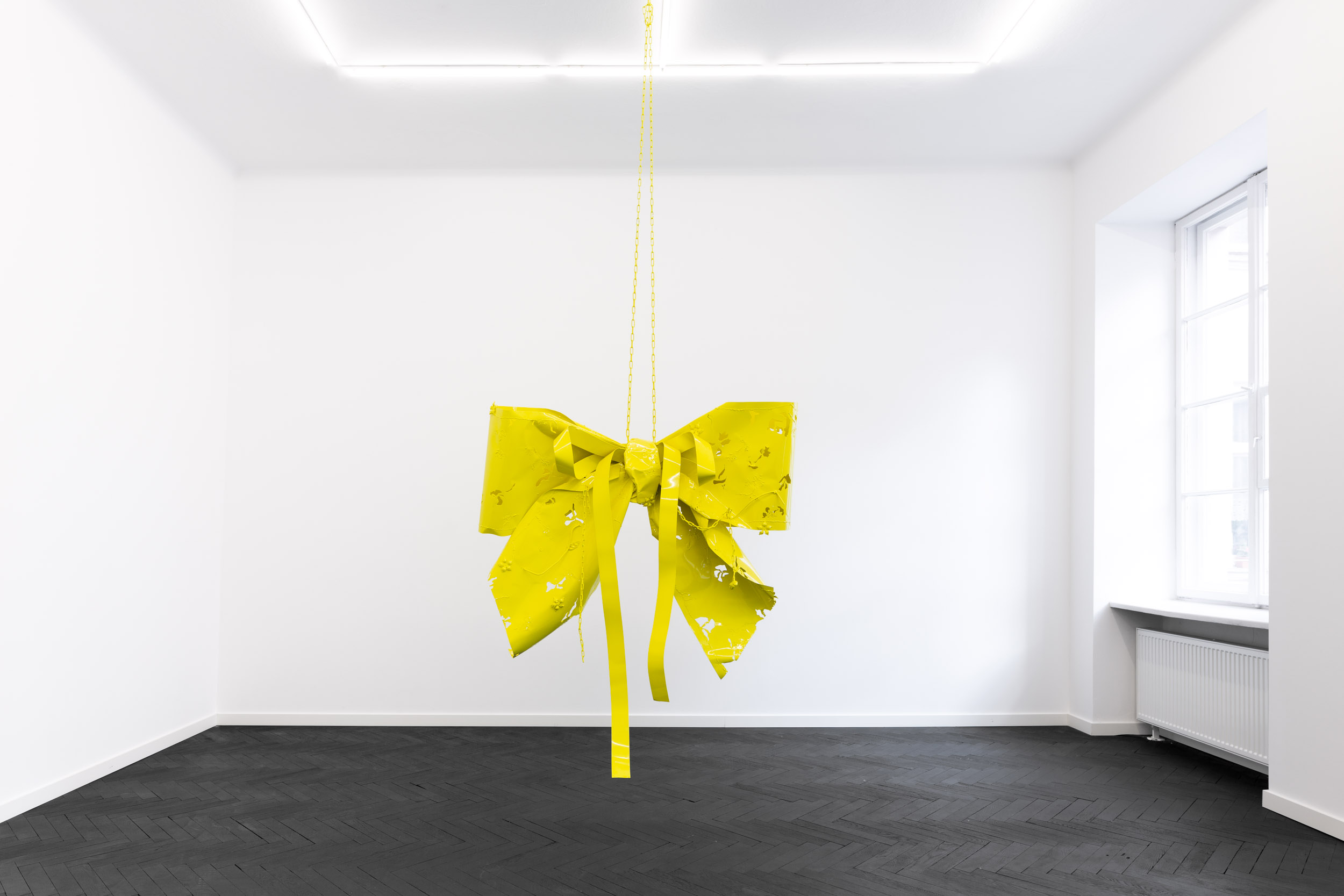




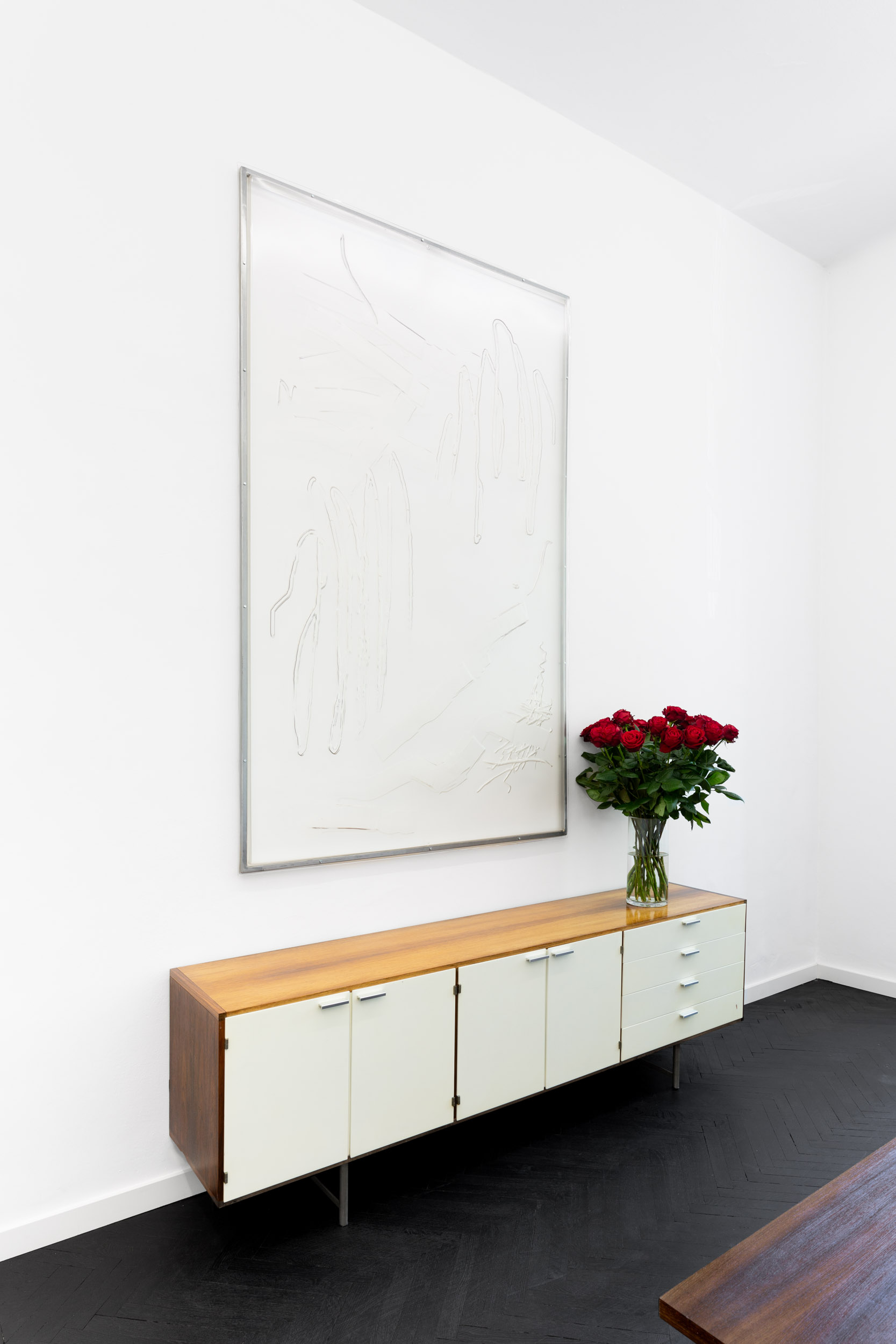
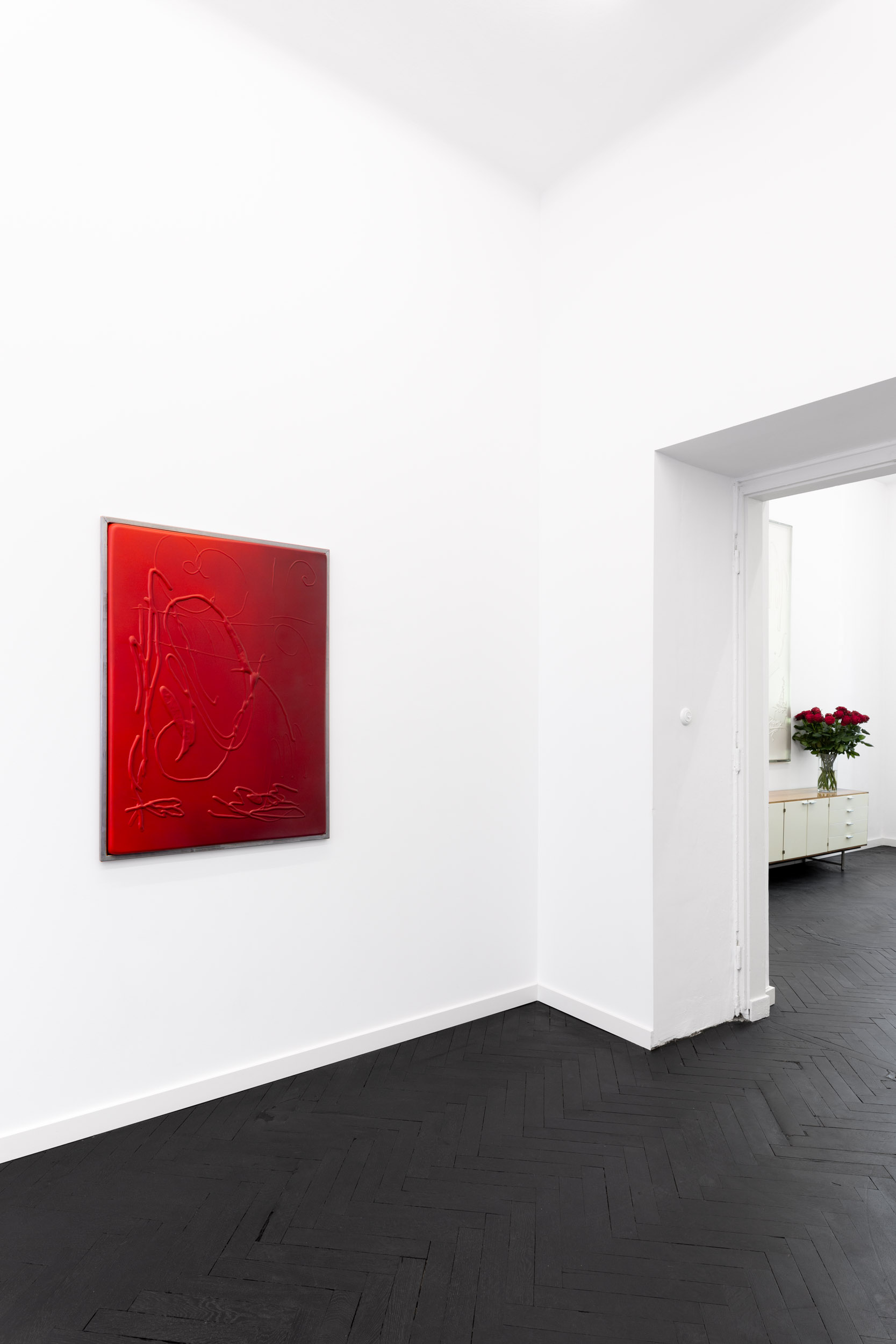

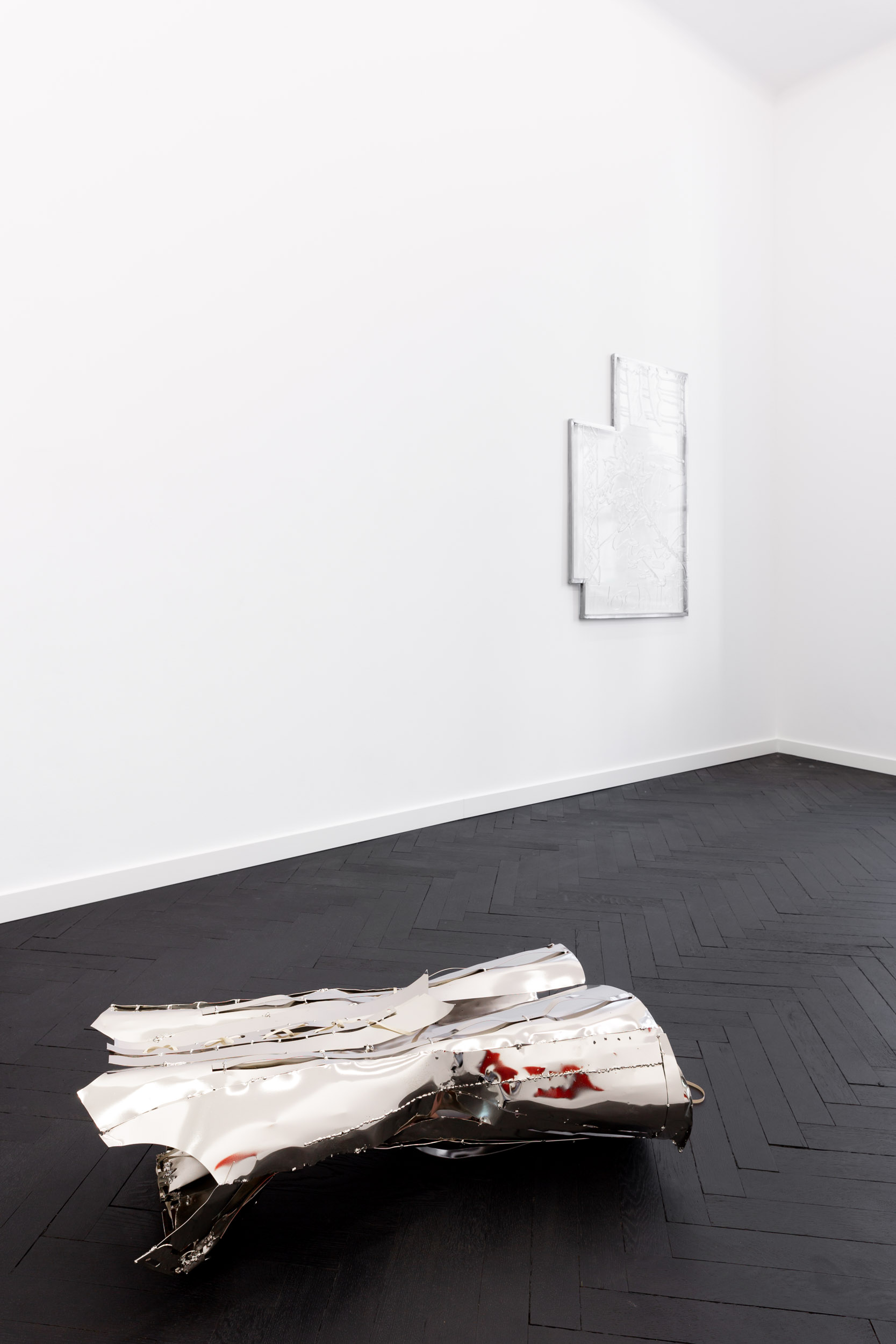
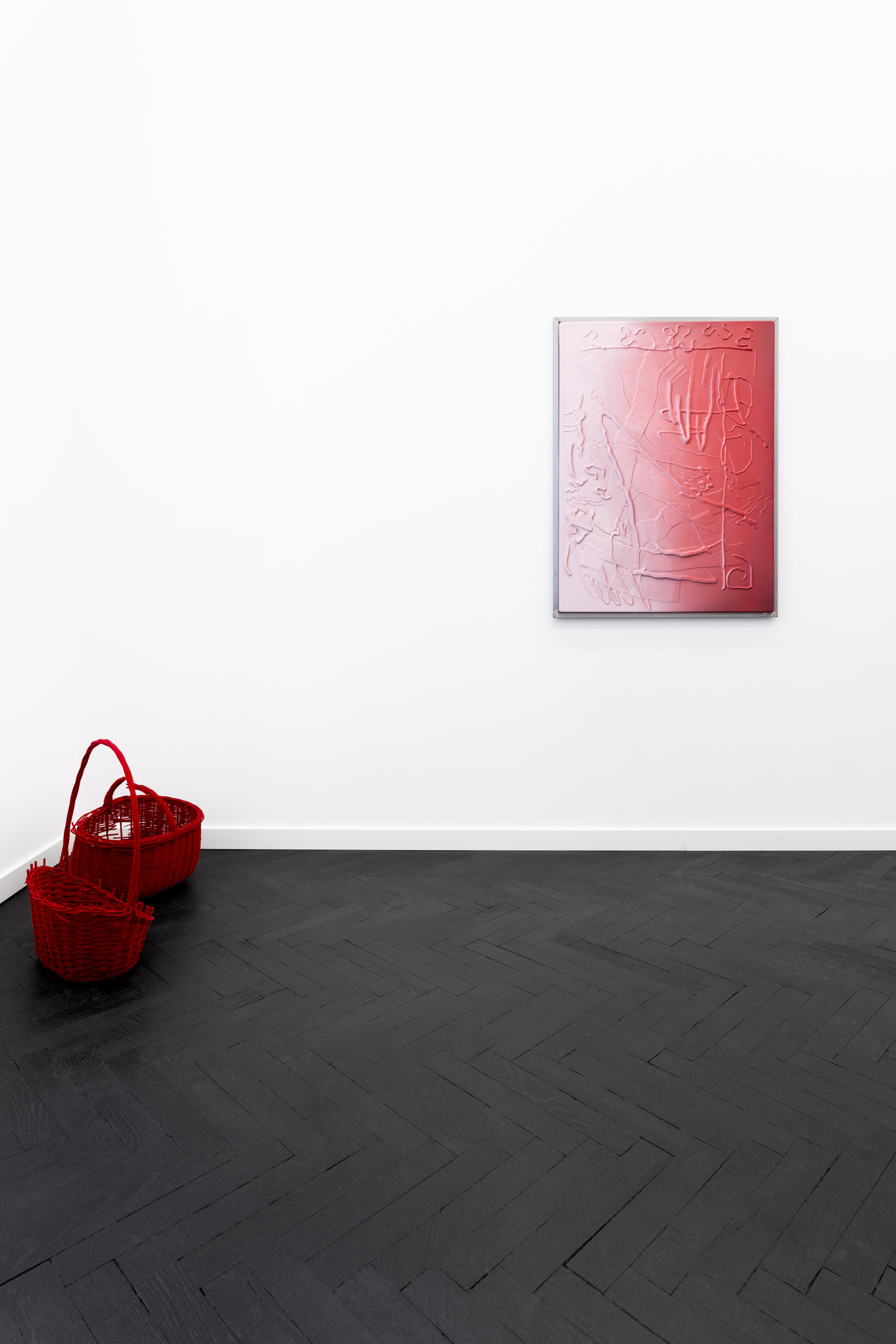



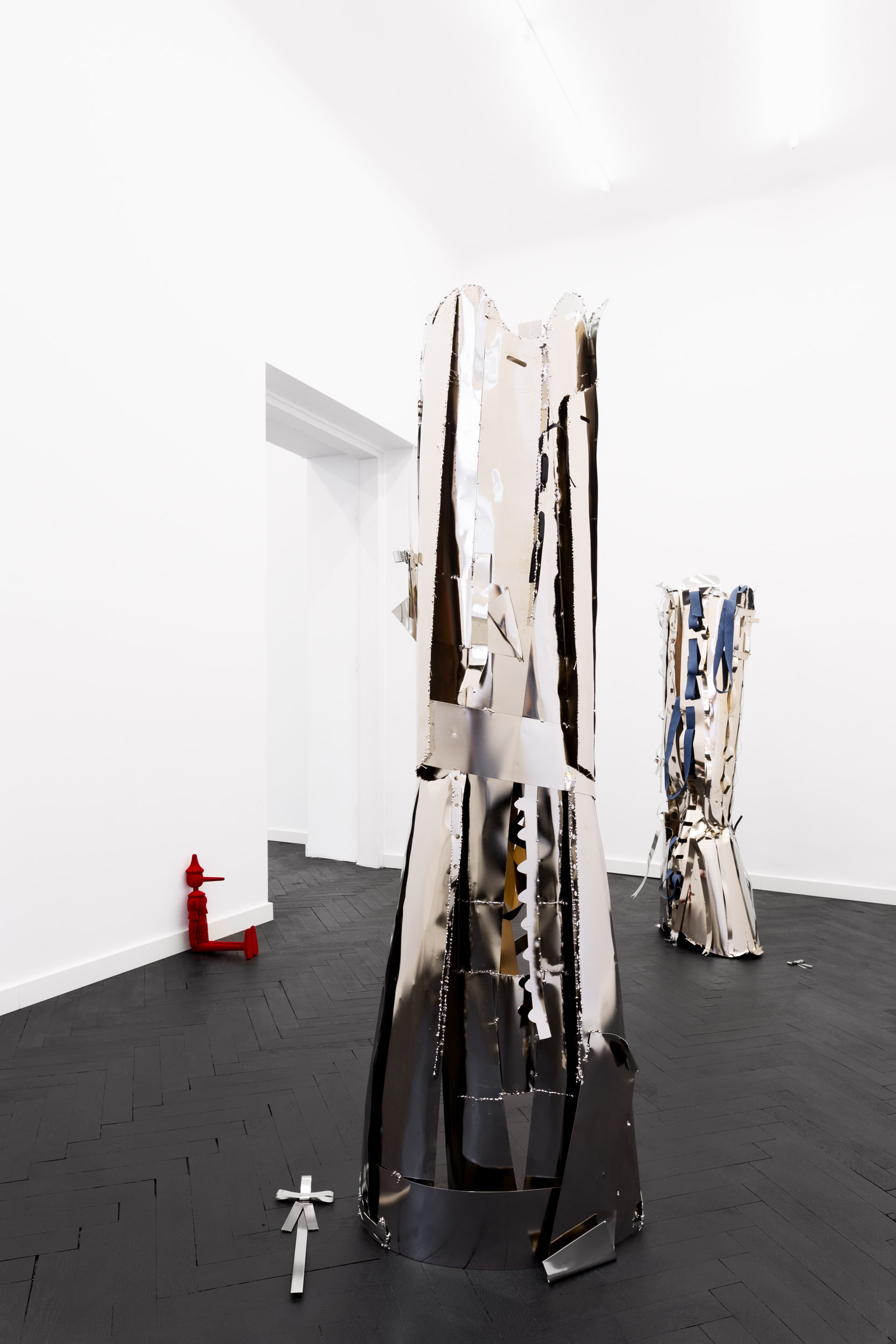
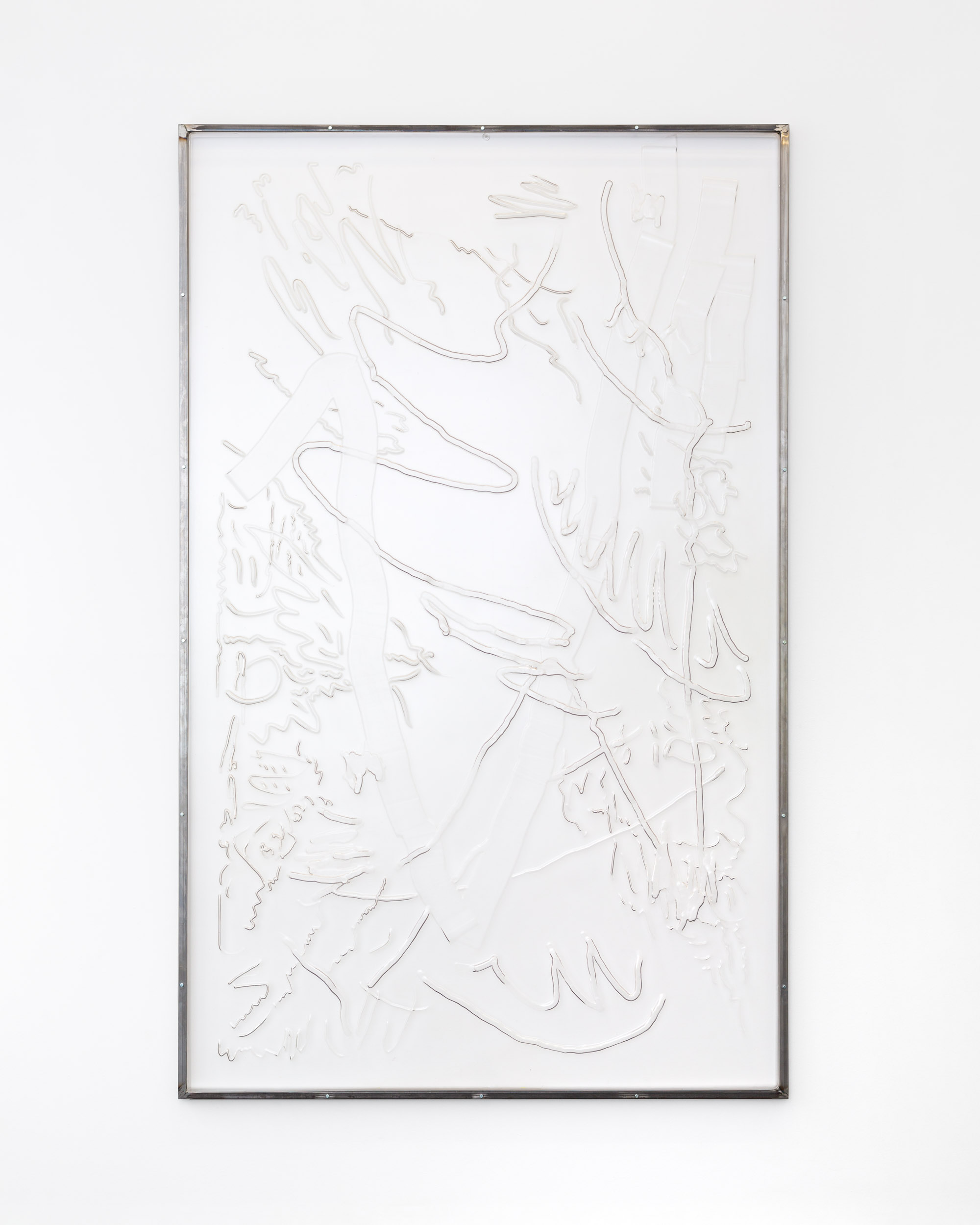

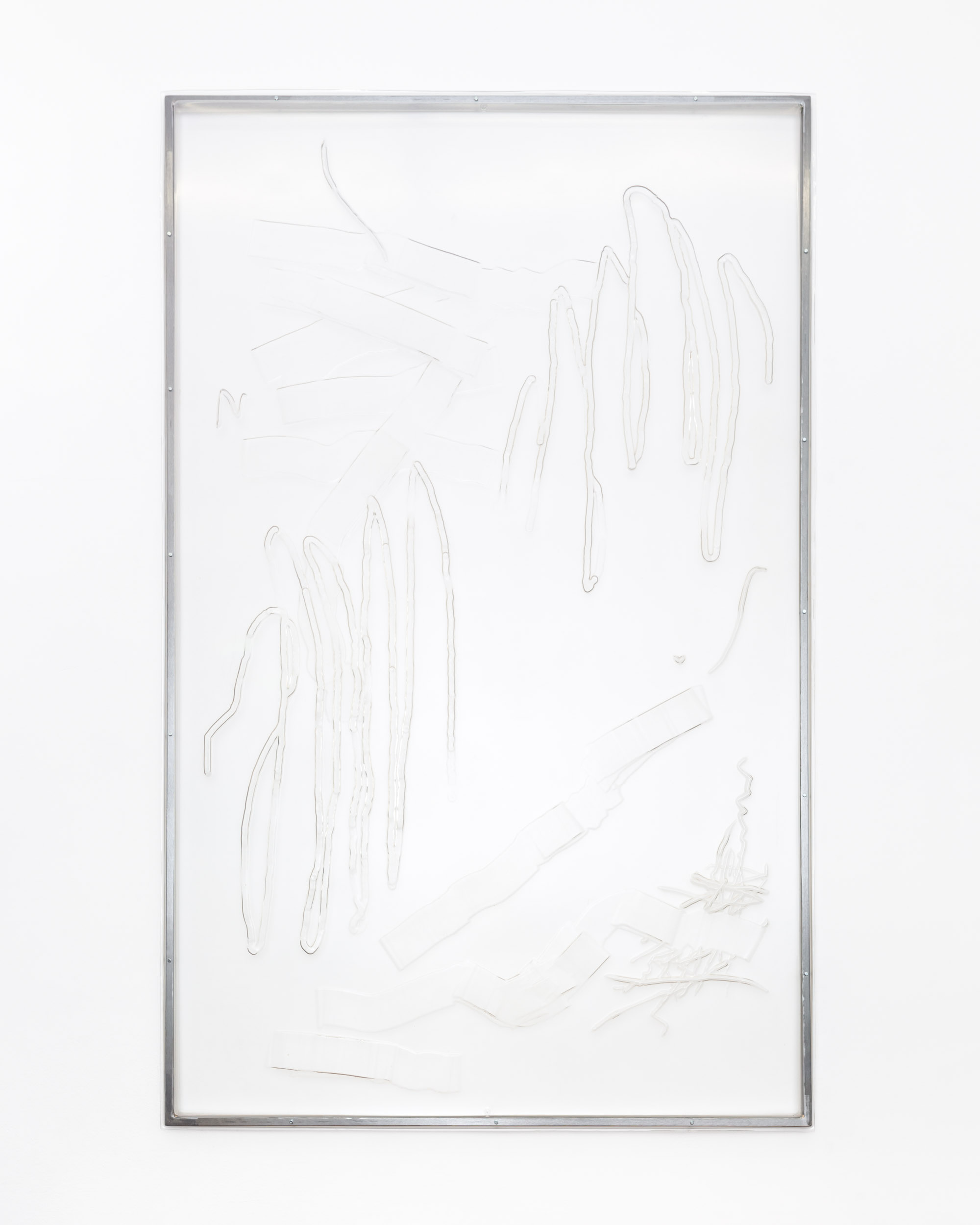

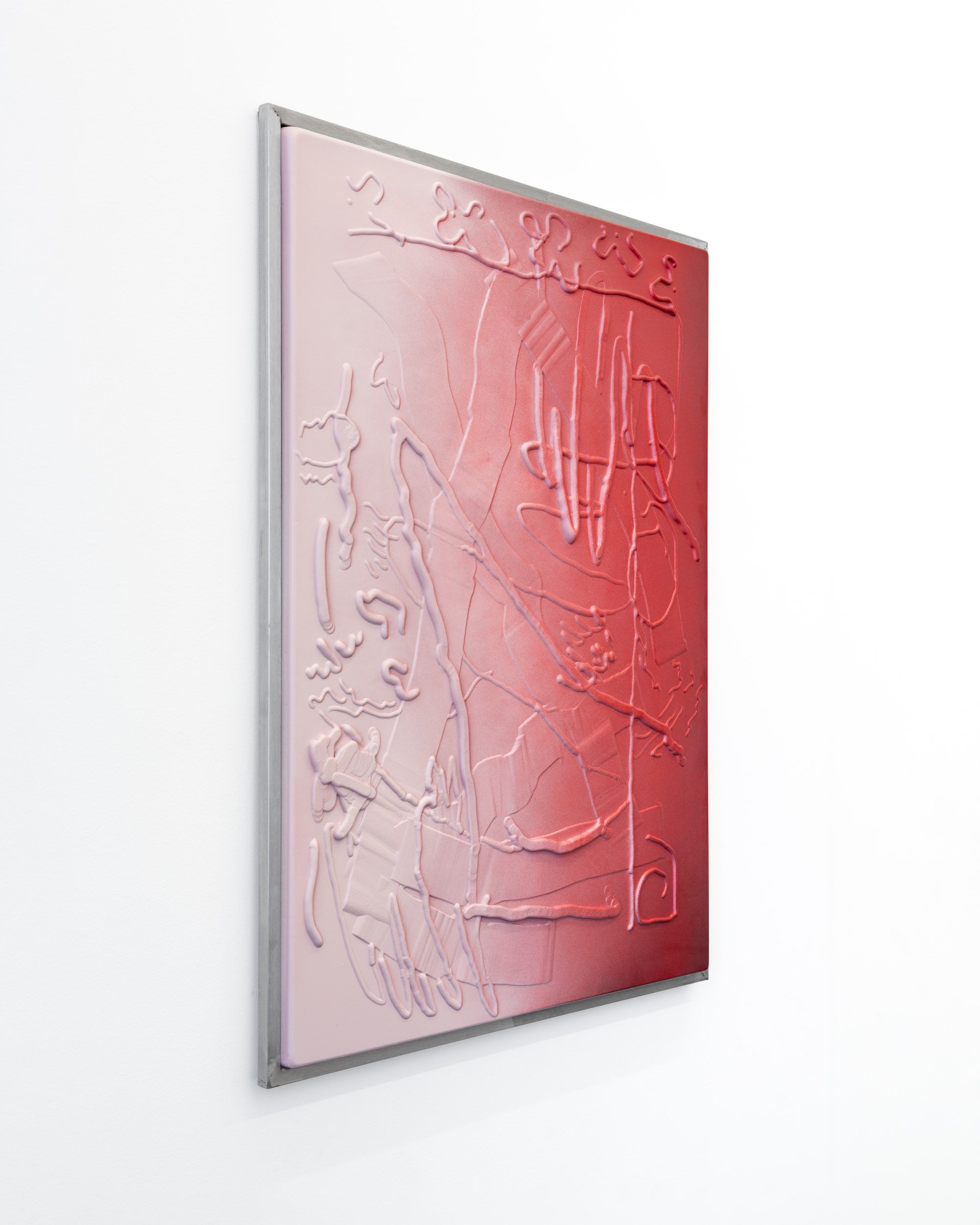

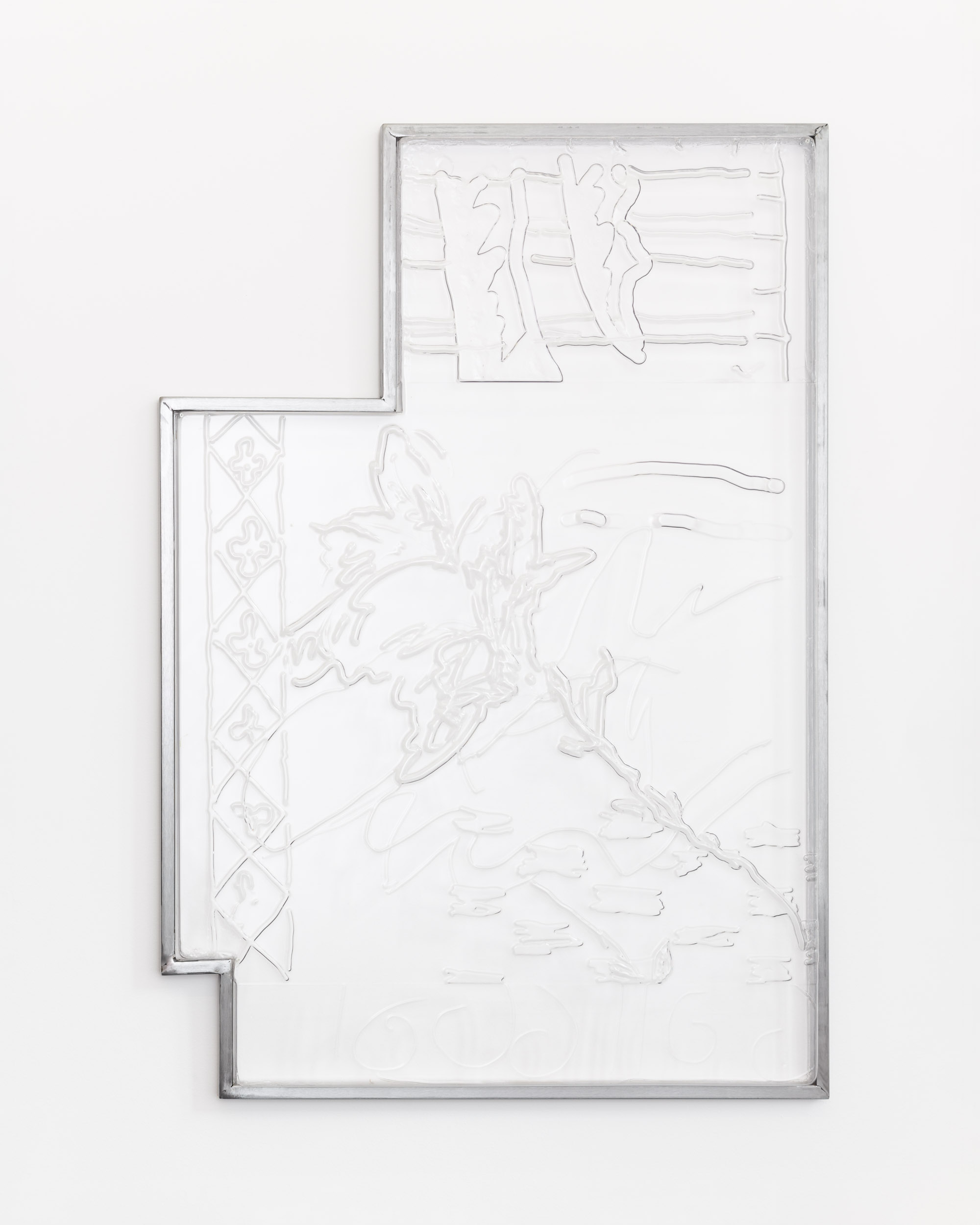



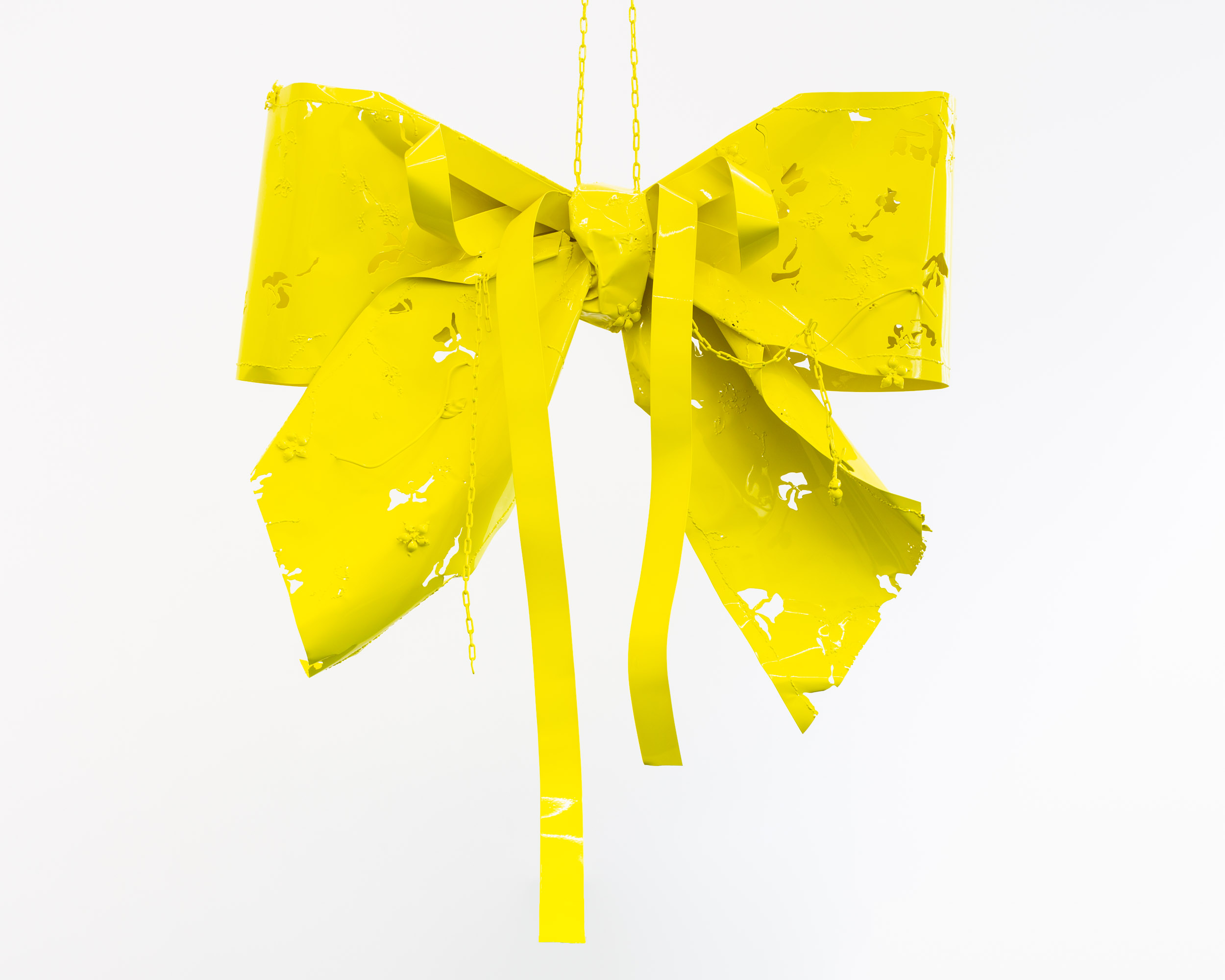
Hannah Sophie Dunkelberg (b. 1987, Bonn, Germany) is a Berlin-based artist who repurposes industrial tools and production techniques to push against the stability of sculpture. She works in a lineage of artists dismantling a modernist preoccupation with structure and integrity. After studying at the HFBK in Hamburg, she graduated from Berlin University of the Arts (UdK) in the class of Manfred Pernice. She has exhibited at Boros Foundation in Berghain, Haus am Lützowplatz, Julia Stoschek Collection, Museum of Photography, Efremidis and Office Impart, Berlin; Museum der bildenden Künste, Leipzig; Ron Mandos, Amsterdam and Kunstraum Potsdam.
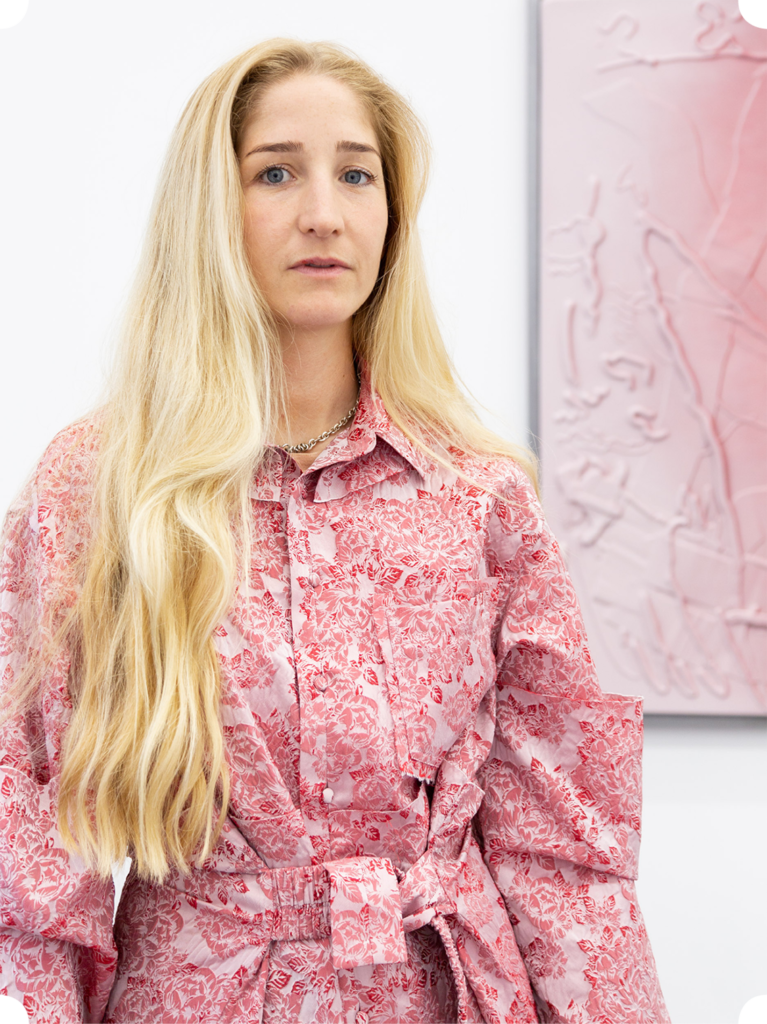
Special thanks to Syrena Real Estate and HOP Chmielna for supporting the exhibition.